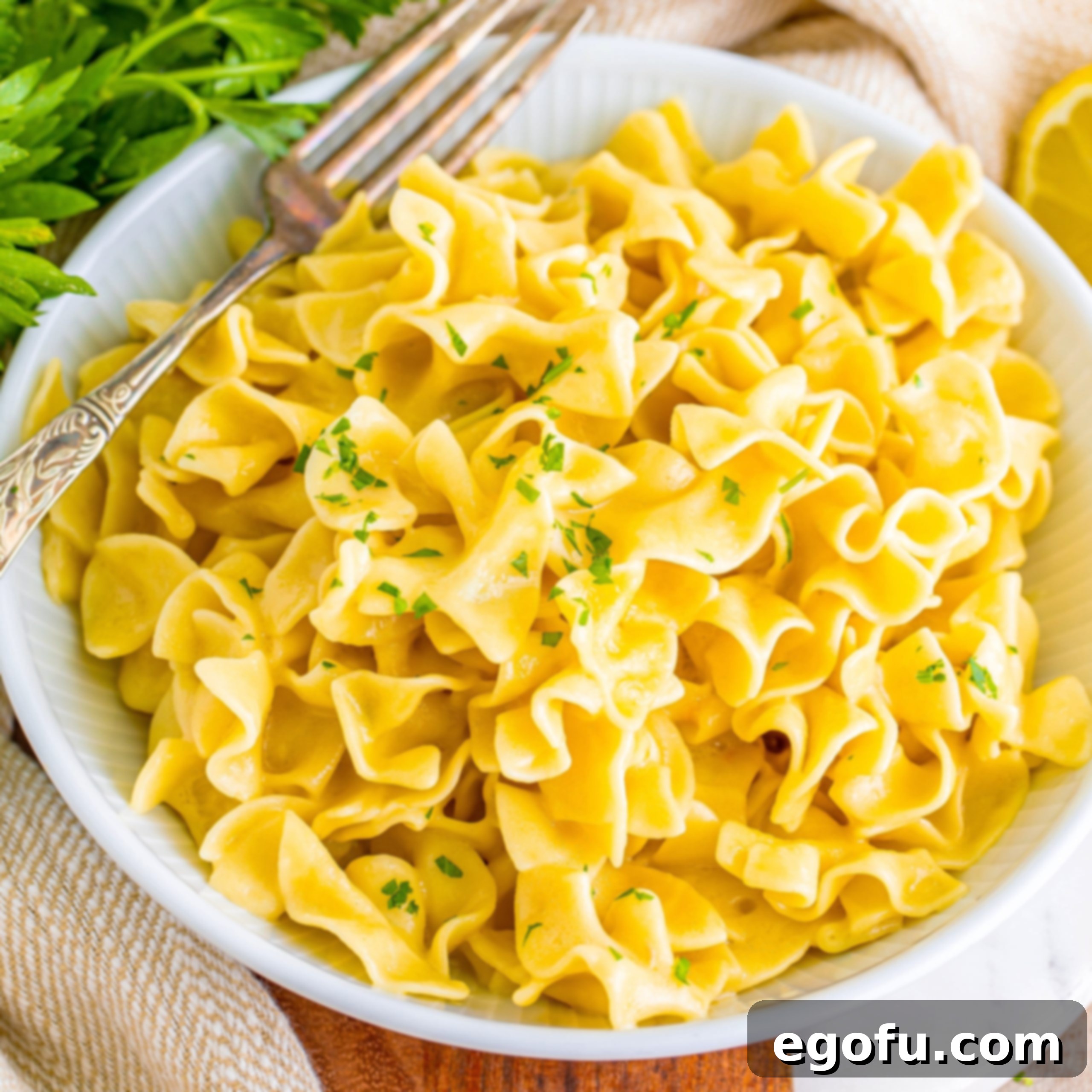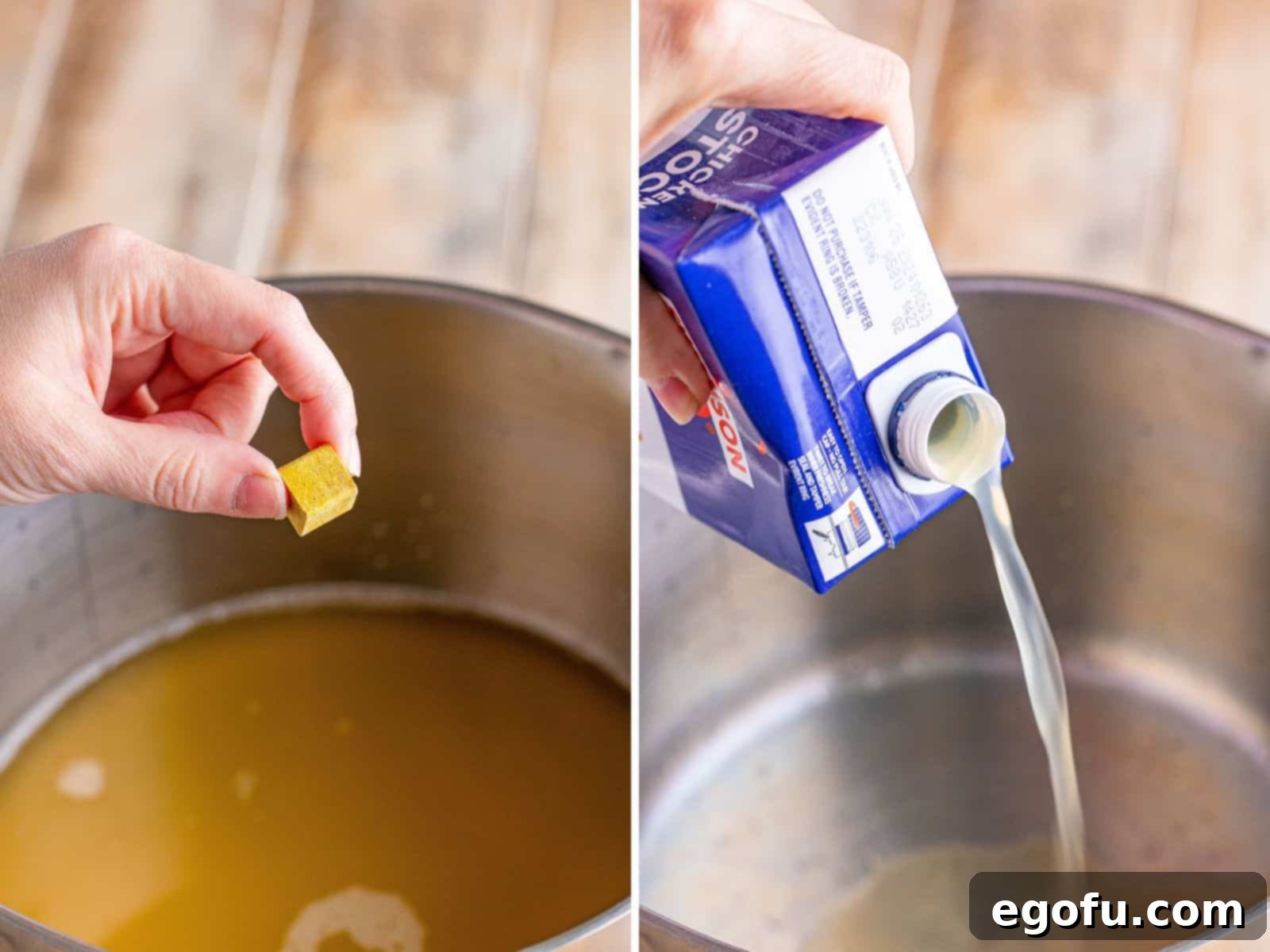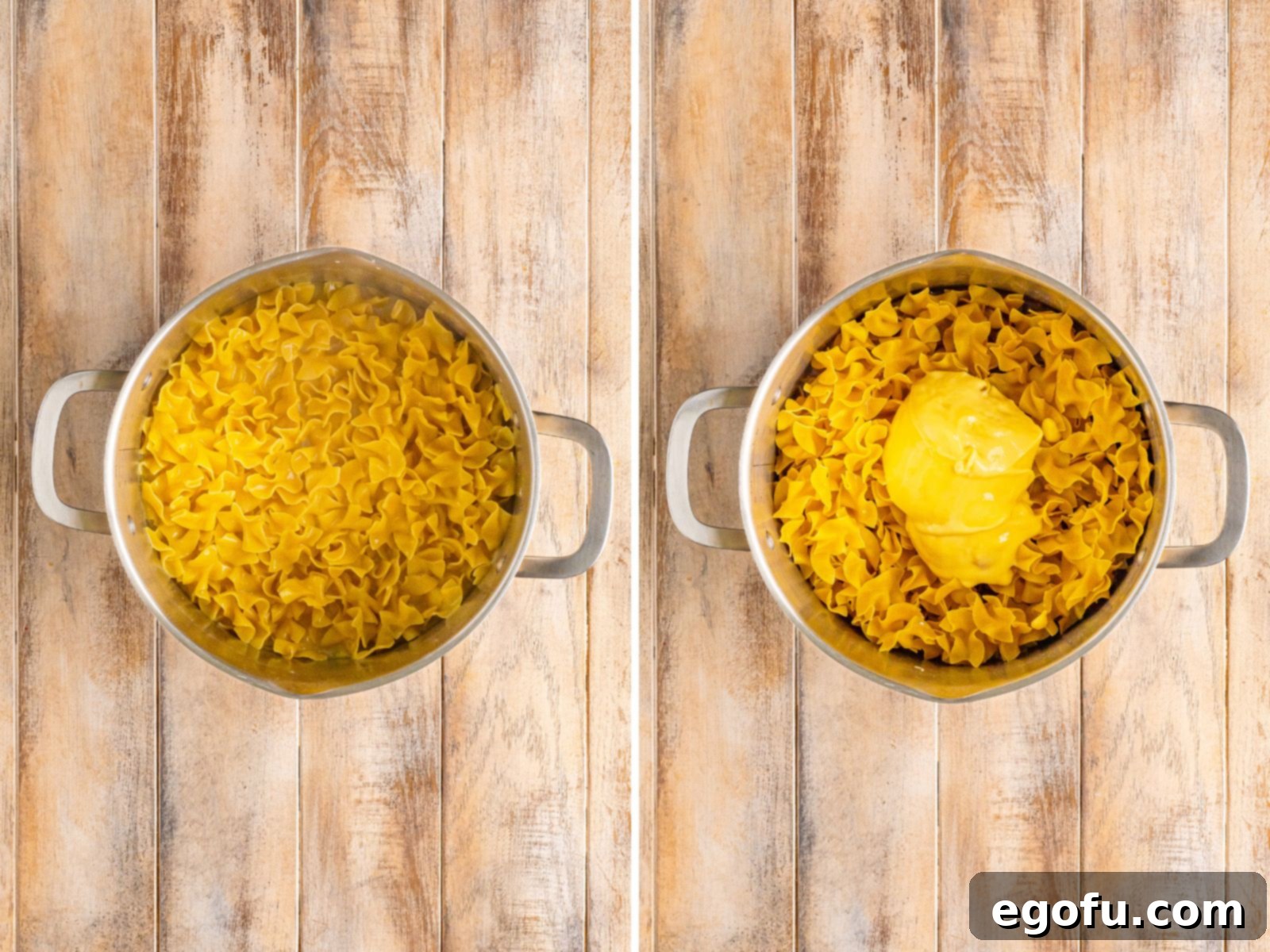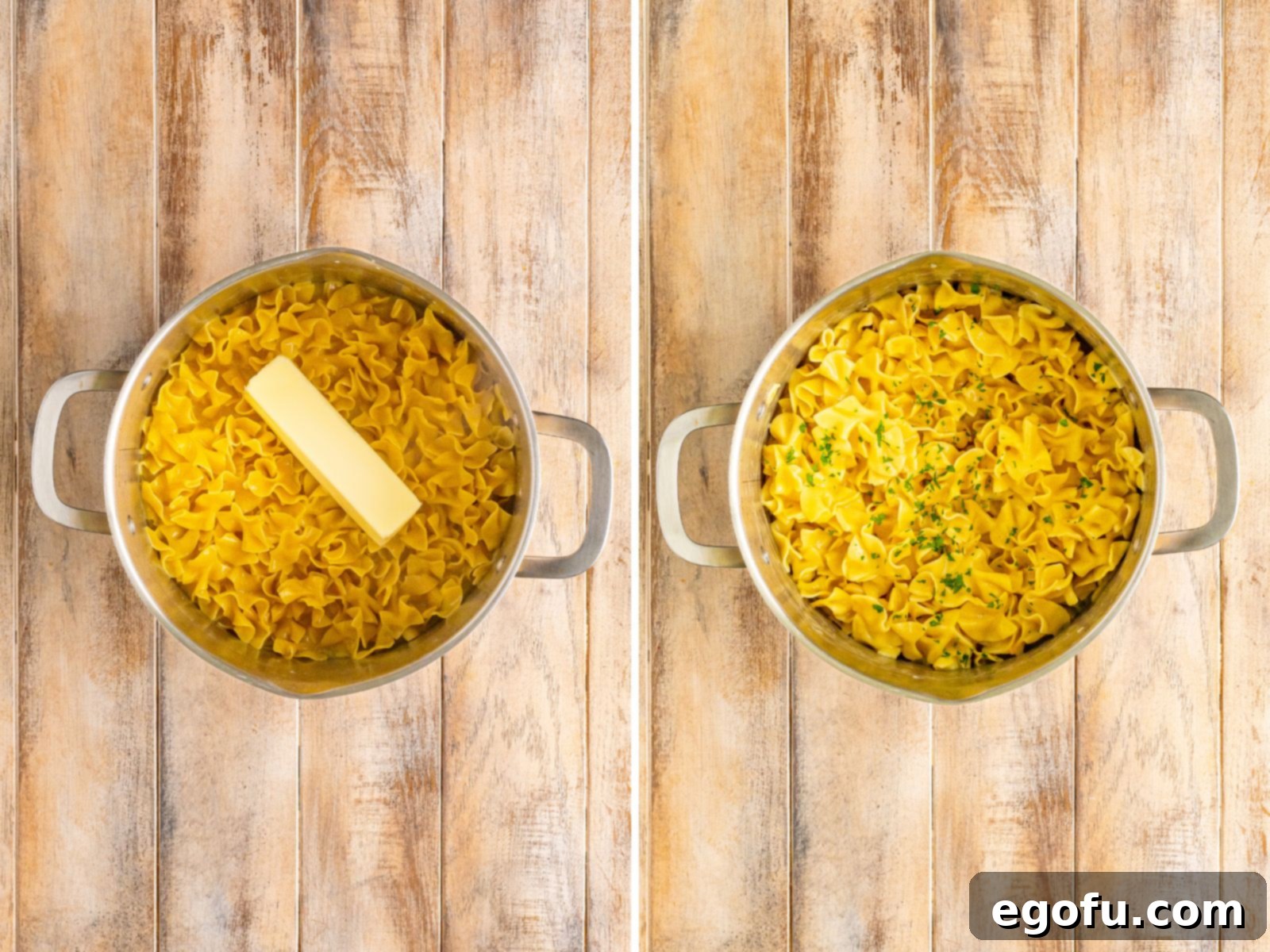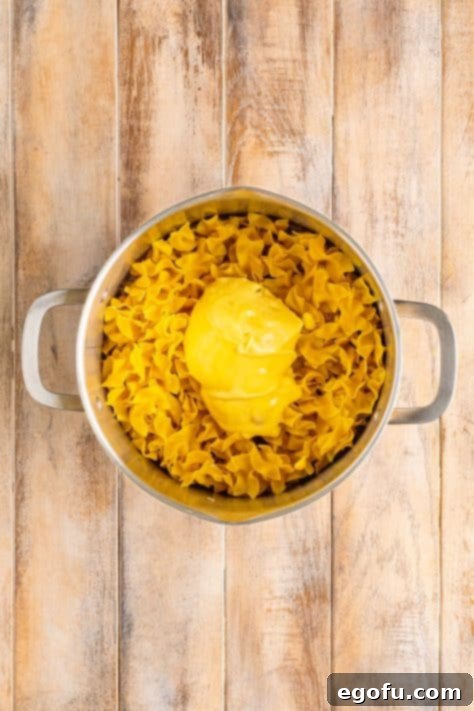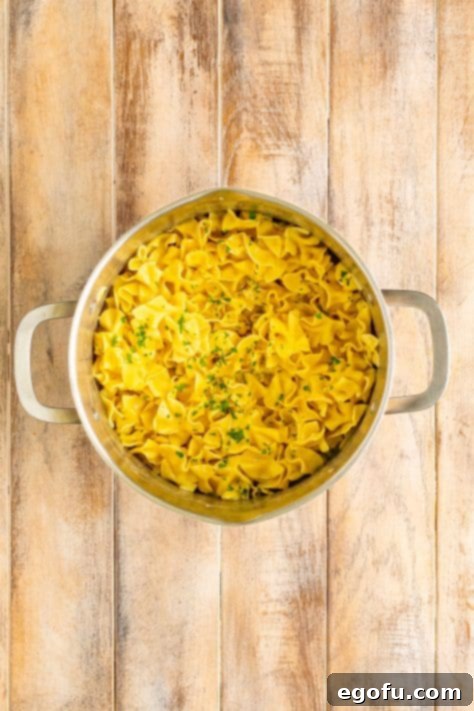Welcome to the recipe that has taken social media by storm! These old-school Cafeteria Noodles are not just a dish; they’re a comforting trip down memory lane, a simple yet incredibly flavorful side dish that has captivated hearts (and taste buds!) across the internet. Get ready to discover why this viral sensation is more than just buttered noodles.
Cafeteria Noodles: A Viral Sensation and Flavorful Comfort Food
The humble Cafeteria Noodles recipe has achieved viral status on platforms like TikTok, and for good reason! While photos might suggest a basic buttered egg noodle dish, their appearance truly doesn’t do justice to the depth of flavor packed within. These aren’t just any noodles; they offer a rich, savory, and incredibly comforting experience that makes them the perfect side dish for any night of the week, effortlessly elevating your meal with their unique, nostalgic taste.
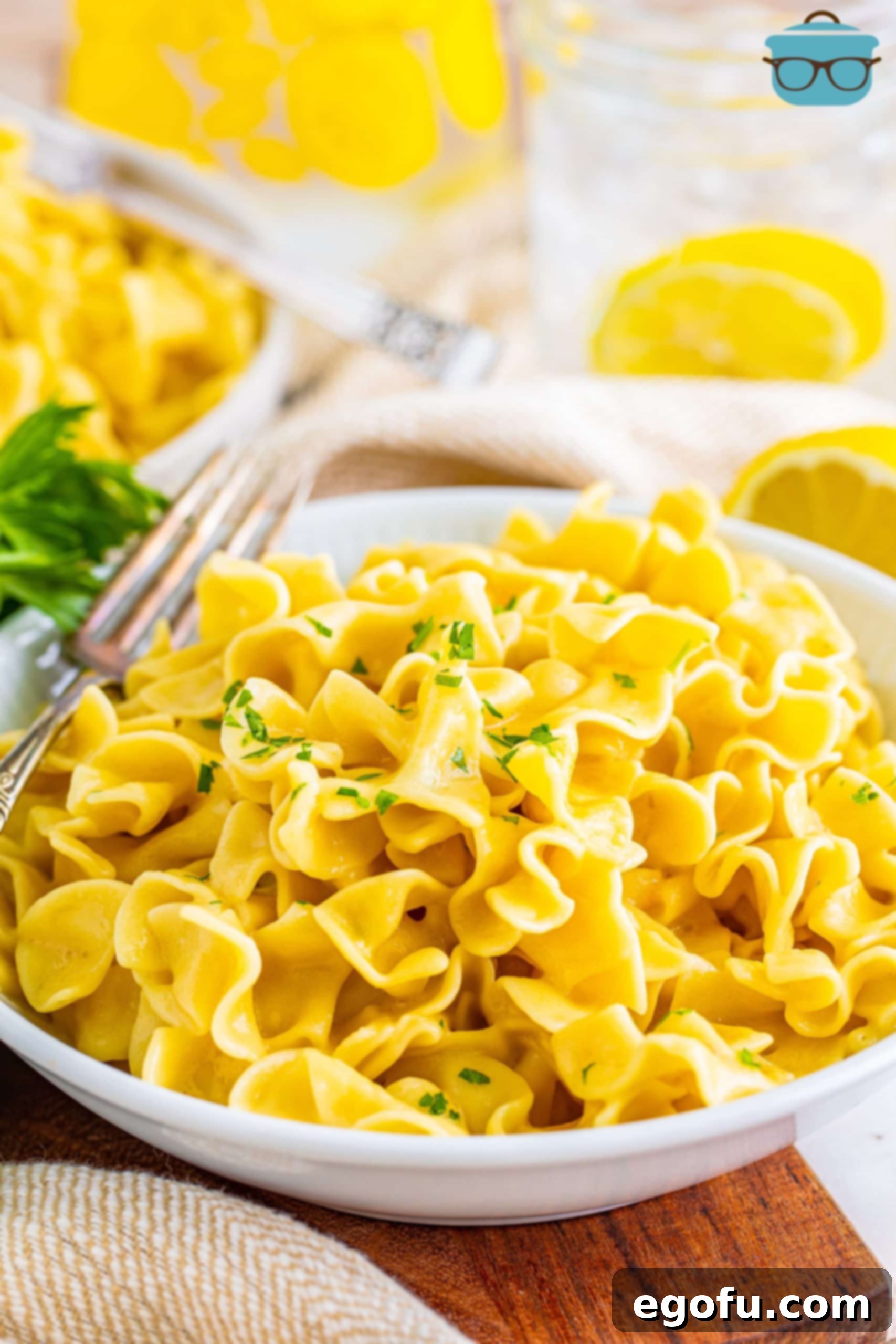
Frequently Asked Questions (FAQ’s) About Cafeteria Noodles
Absolutely! While traditionally served as a side, these versatile noodles can easily be transformed into a hearty main course. Consider adding cooked ground beef, shredded rotisserie chicken, grilled chicken strips, or even ground turkey for a protein boost. For a seafood twist, cooked shrimp would also be a delicious addition. The savory base of the noodles pairs wonderfully with various meats, making it a truly adaptable dish for a complete meal.
Incorporating vegetables is a fantastic way to enhance both the nutritional value and texture of your Cafeteria Noodles. Peas, sliced mushrooms, diced carrots, or steamed broccoli florets are excellent choices that complement the creamy, chicken-flavored sauce. You can stir them in during the last few minutes of cooking or sauté them separately and mix them in before serving. Experiment with your favorite veggies to make this dish uniquely yours.
For the authentic, classic Cafeteria Noodles experience, dried egg noodles are highly recommended. Their tender texture and ability to absorb the rich sauce are key to this recipe’s charm. While other pasta shapes might technically work, they haven’t been tested to achieve the same specific outcome. If you do decide to experiment with alternatives like fettuccine or penne, be aware that the cooking time and liquid absorption may vary, potentially altering the final consistency and flavor profile.
The core flavor profile of this recipe heavily relies on chicken, utilizing both chicken stock and chicken bouillon. Therefore, cream of chicken soup is integral to achieving that signature taste and creamy texture. Substituting it with another cream soup might significantly alter the intended flavor. However, if you’re feeling adventurous or simply out of cream of chicken, you could explore options like cream of mushroom or cream of celery soup, though the chicken essence would be diminished. For the most authentic results, sticking to cream of chicken is best. Alternatively, if you prefer a homemade approach, a simple Homemade Cream of Chicken Soup recipe can be easily prepared to use in its place.
The precise origin of the name “Cafeteria Noodles” is a topic of charming debate, with many theories circulating. Given that this dish has been a comforting staple since at least the 1960s and 70s, the most widely accepted theory suggests they earned their name from being a beloved and frequently served item in school cafeterias and cafeteria-style restaurants across the country. It evokes a sense of nostalgia for simple, hearty meals enjoyed during childhood, making the name itself a part of its comforting appeal.
The chicken bouillon cube is a small but mighty ingredient in this recipe, acting as a concentrated flavor booster that significantly enhances the overall chicken essence of the dish. Its contribution to the savory depth is crucial for achieving the authentic Cafeteria Noodles taste. While bouillon powder or paste can be used as an equivalent, we highly recommend using a bouillon cube or its direct counterpart as specified. They are generally inexpensive and readily available, and their impact on flavor is truly unmatched, making them essential for the intended outcome.
Yes, absolutely. If you are mindful of your sodium intake, feel free to opt for low-sodium or no-sodium chicken stock, chicken bouillon, and even unsalted butter. These substitutions will help you control the overall sodium content of the dish without compromising on the essential flavors. Always taste and adjust seasonings as needed, but rest assured, the core components of the recipe will still deliver that classic comforting taste.
Cafeteria Noodles are an incredibly versatile side dish that complements a wide array of main courses. Their creamy, savory profile pairs wonderfully with classic comfort foods such as a succulent roast chicken, perfectly seared pan-fried pork chops, crispy Ritz cracker chicken, or tender chicken tenders. They also make an excellent accompaniment to meatloaf, roasted turkey, or any dish where you’d typically serve a comforting starch. Their rich flavor ensures they stand out as a memorable component of your meal.
You absolutely could, and it would be delicious! The original recipe is kept simple to preserve its nostalgic charm, but a touch of garlic would certainly elevate the flavor profile without overpowering it. We suggest starting with about a teaspoon of garlic powder, adding it along with the chicken stock and bouillon. Garlic powder tends to blend seamlessly into the sauce. Feel free to adjust the amount to your personal preference – a little extra garlic is rarely a bad thing in comfort food!
Leftover Cafeteria Noodles can be stored in an airtight container in the refrigerator for up to 3 days. To reheat, gently warm them on the stovetop over low heat, adding a splash of chicken broth or milk if the sauce has thickened too much. Stir frequently until heated through. Freezing is generally not recommended for this dish, as the creamy sauce and noodles can sometimes separate or become mushy upon thawing and reheating, compromising the delightful texture that makes this recipe so special.

Essential Ingredients for Your Nostalgic Cafeteria Noodles
Creating these incredibly flavorful and comforting Cafeteria Noodles requires just a handful of simple, readily available ingredients. The magic truly lies in their combination and preparation, transforming basic pantry staples into a dish that’s rich in taste and nostalgia. Here’s a closer look at what you’ll need:
- Chicken Stock: The foundation of our flavorful sauce. You can use either chicken stock or chicken broth; stock typically offers a slightly richer, more robust flavor due to being simmered longer with bones. For those watching their sodium intake, low-sodium or no-sodium varieties are excellent choices, allowing you to control the seasoning precisely.
- Chicken Bouillon Cube: This tiny ingredient is a powerhouse of concentrated chicken flavor. It’s crucial for enhancing the savory depth of the noodles. While the recipe specifies a cube, you can certainly substitute with an equivalent amount of chicken bouillon powder or even a high-quality bouillon paste like “Better Than Bouillon” for similar fantastic results. Always check the packaging for the correct conversion. Opt for a lower sodium option if preferred.
- Egg Noodles: The star of the show! Wide, dried egg noodles are ideal for this recipe, providing that authentic cafeteria texture. Both regular egg noodles and “no-yolk” varieties work beautifully, absorbing the creamy sauce and becoming incredibly tender. Their broad, flat shape ensures they get coated perfectly with every spoonful.
- Cream of Chicken Soup: This canned classic is essential for achieving the signature creamy, velvety sauce and distinct chicken flavor that defines Cafeteria Noodles. We haven’t tested this recipe with other cream soups, as the chicken flavor is paramount. However, if you’re adventurous, cream of mushroom or cream of celery could offer an interesting variation, though it wouldn’t be the traditional profile. Remember, low-sodium versions are available. For a truly from-scratch experience, consider making your own Homemade Cream of Chicken Soup.
- Salted Butter: Butter is more than just a fat here; it’s a crucial flavor enhancer, adding richness and a silky mouthfeel to the finished dish. We recommend using real salted butter for the best taste. If you’re managing sodium, unsalted butter is a great alternative, allowing you to season to taste. The amount can be adjusted slightly based on your preference for richness; feel free to use a little less or a little more than the specified amount.
- Parsley (Optional Garnish): A sprinkle of fresh chopped parsley at the end adds a touch of color and a fresh, herbaceous note that brightens up the rich flavors. It’s purely optional but highly recommended for presentation and a subtle flavor contrast.
By gathering these simple ingredients, you’re well on your way to recreating a beloved classic that promises both comfort and incredible flavor.
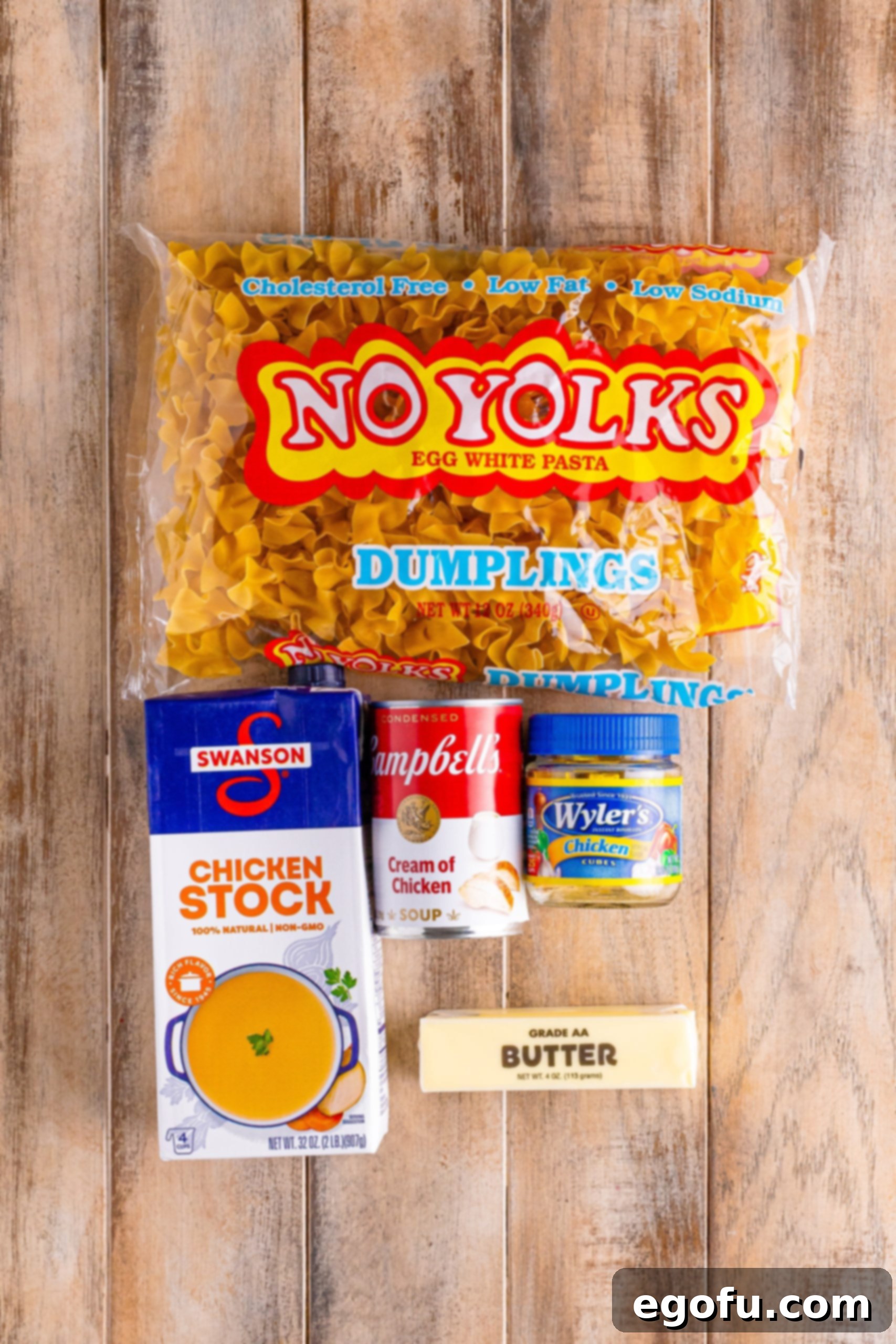
How to Make Easy and Delicious Cafeteria Noodles
Preparing these viral Cafeteria Noodles is surprisingly straightforward, requiring minimal effort for maximum flavor. Follow these simple steps to bring this comforting classic to your dinner table:
Prepare the Flavorful Base: In a large, heavy-bottomed pot or a deep skillet with a lid, combine the chicken stock and the chicken bouillon cube. Bring this mixture to a rolling boil over medium-high heat. Stir occasionally to ensure the bouillon cube fully dissolves, infusing the stock with its rich, savory essence.

Cook the Noodles: Once the stock reaches a vigorous boil, add the dried egg noodles to the pot. Stir well to prevent them from sticking together. Allow the stock to return to a boil after adding the noodles. Cook according to package directions for al dente, ensuring they are slightly firm, as they will continue to soften in the sauce.

Create the Creamy Sauce: Stir in the can of cream of chicken soup with the noodles. Mix thoroughly until the soup is fully incorporated and the sauce is smooth. Bring the mixture back to a gentle boil and let it simmer for approximately 2 minutes, allowing the flavors to meld and the sauce to slightly thicken. This step is crucial for developing the rich, creamy texture.
Finish with Butter: Remove the pot from the heat. Add the stick of salted butter, allowing it to rest on top of the hot noodles and sauce. Do not stir immediately.

Melt and Serve: Cover the pot with its lid and let it sit for a few minutes, allowing the residual heat to completely melt the butter. Once melted, give the noodles a final gentle stir to distribute the rich, buttery sauce evenly. If desired, garnish with fresh chopped parsley for a pop of color and freshness. Serve immediately and enjoy the warm, comforting goodness!
These simple steps will guide you to a perfect batch of Cafeteria Noodles, a truly satisfying dish that will quickly become a family favorite.
Serve these irresistible noodles as a standout side dish or as the base for a more elaborate meal. Their versatility and universally loved flavor make them a staple in any home cook’s repertoire.

Craving More Comforting Recipes?
If you’ve enjoyed the nostalgic flavors of our Cafeteria Noodles, you’re in for a treat! Explore more comforting, easy-to-make, and often viral-worthy recipes that are perfect for family dinners or entertaining. Here are some of our favorites:
- Hearty Cafeteria Chili
- Tik Tok Million Dollar Spaghetti
- Viral Tik Tok Cinnamon Rolls
- Trendy Tik Tok Grinder Salad Sandwich
- Irresistible Tik Tok Marry Me Chicken
- Creamy Cheesy Chicken Spaghetti
- Classic Chicken Noodle Casserole
- Fluffy Butter Swim Biscuits
Originally published: November 2022
Updated with fresh photos and republished: April 2024
Original recipe inspiration by @carols_cookin

Cafeteria Noodles Recipe
Print
Pin
Rate
5 minutes
35 minutes
40 minutes
8
servings
Brandie Skibinski
Ingredients
-
4
cups
chicken stock -
1
chicken bouillon cube -
16
ounces
egg noodles -
10.5
ounce
can cream of chicken soup -
1
stick
(½ cup) salted butter - parsley, for garnish (optional)
Instructions
- In a large pot or deep skillet with a lid, add the chicken stock and bouillon cube. Bring the mixture to a rolling boil over medium-high heat, stirring until the bouillon is fully dissolved.

- Once the stock is boiling, add the egg noodles and stir to ensure they are fully submerged. Allow the stock to return to a boil.

- Stir in the cream of chicken soup until well combined with the noodles and stock. Bring the mixture back to a boil and let it gently boil for 2 minutes to thicken slightly.

- Remove the pot from the heat. Place the stick of butter directly on top of the noodles and sauce.

- Cover the pot with its lid and let it sit for a few minutes until the butter is completely melted. Stir well to incorporate the butter into the creamy sauce. Garnish with fresh parsley, if desired, and serve warm.

Video Tutorial
Recipe Notes & Tips
- For additional substitutions, common questions, and ingredient details, please refer to the comprehensive FAQ’s and ingredient list provided earlier in this article.
- Enhance the savory profile by adding about a teaspoon of garlic powder to the chicken stock at the beginning of the cooking process. It blends seamlessly and adds a wonderful aromatic depth. Adjust to your preferred garlic intensity.
- To ensure the noodles cook evenly and absorb the maximum flavor, use a pot or skillet large enough to allow them to spread out without crowding.
- For a slightly thinner sauce, you can add a splash of warm milk or chicken broth after the butter has melted and stirred in, adjusting to your desired consistency.
Side Dish, Comfort Food
American
Nutrition Information (Estimated Per Serving)
Calories:
297
kcal
|
Carbohydrates:
47
g
|
Protein:
12
g
|
Fat:
6
g
|
Sodium:
565
mg
|
Fiber:
2
g
|
Sugar:
3
g
Nutritional Disclaimer
“The Country Cook” is not a registered dietician or nutritionist. The nutritional information provided is an estimate based on the ingredients and preparation methods. If precise calorie counts and other nutritional values are important for your dietary needs, we highly recommend running the ingredients through your preferred online nutritional calculator. Please note that nutritional values can vary significantly depending on the specific brands of ingredients used and any modifications made to the recipe.
Did you make this recipe?
Share your culinary creation on Instagram by tagging @thecountrycook and using the hashtag #thecountrycook! We love seeing your delicious results!
